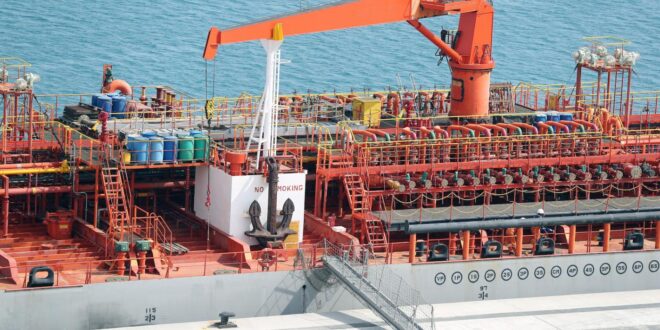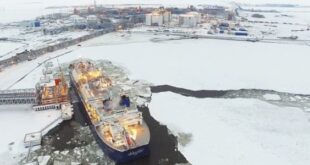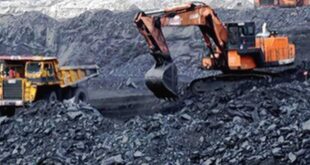To say that the six countries that make up the Gulf Cooperative Council (GCC) live and breathe hydrocarbons is hardly an exaggeration. About 60years ago, the average city in Saudi Arabia, the United Arab Emirates (UAE), Kuwait, Qatar, Bahrain, and Oman was home to maybe a few thousand people; fast forward to the present and many cities have transformed into world-class metropolises thanks to the region’s vast oil and gas riches. Saudi Arabia alone owns 16% of the world’s proven oil reserves and is also the world’s second-largest oil producer, responsible for 15% of global output.
In the current year, Saudi Arabia and several other Middle East nations have reported rare budget surpluses thanks to high oil and gas prices. According to the kingdom’s finance ministry, releasing what it said were preliminary estimates, the country’s 2022 surplus clocked in at 102 billion riyals ($27 billion), good for 2.6% of its gross domestic product (GDP). For 2022, total revenue will have hit around 1.234 trillion riyals, against spending of around 1.132 trillion riyals.
But it has not always been this way. For years, most GCC nations have languished under heavy budget deficits amid low energy prices. Indeed, just last year, S&P Global Ratings estimated that GCC central government deficits would reach about $490 billion cumulatively between 2020 and 2023 while government debt would surge by a record-high $100 billion in 2021.
Of course, things have turned out much better than feared for these nations, but they remain acutely aware of just how dependent on oil and gas their economies have become.
It’s for this reason that Saudi Arabia and its GCC peers have embraced the energy transition and are now investing heavily in renewable energy. According to BCG’s annual M&A report, 10.3 % of all M&A transactions are green energy deals, with green M&A activity having quadrupled since 2001. BCG says that the Middle East recorded 283 green deals in the first three quarters of 2022, marking an increase of 16% from the same period last year with a total value of $23.8 billion. The report foresees environmental considerations continuing to drive an increasing number of deals, despite unfavorable macroeconomic conditions.
“Green deals are very hot in the region. Soaring sustainability transactions in the Middle East are a clear outcome of established national transformation programs seeking out diverse economic outputs for countries on their path to net zero. As the region continues grounding itself as a hub where collaboration and diversification can bear fruit, so will green mergers and acquisitions,” Ihab Khalil, Managing Director, and Senior Partner, BCG, has declared.
BCG’s analysis has revealed that despite the substantial premium they often command, green deals globally actually create more value than non-green deals upon announcement and over the ensuing two years. According to the report, the median two-year relative total shareholder return (rTSR) of non-green deals (-0.55%) exceeds that of green deals (-2.38%). Further, by analyzing cumulative abnormal return (CAR) for three-day periods before and after a deal announcement, BCG found that the median CAR of environmental-related transactions (1.0%) is significantly marginally higher than that of non-green deals (0.0%).
Of all the Gulf nations, it is Saudi Arabia and the UAE that are leading the way when it comes to clean energy investments. Let’s delve into exactly how these two countries are restrategizing and diversifying their economies away from oil.
Saudi Arabia: Solar, Wind, and Hydrogen
Although Saudi Energy Minister Prince Abdulaziz bin Salman last year made waves in the oil community after telling Bloomberg News that Saudi Arabia intends to pump every last drop of oil and intends to be the last man standing, Saudi Arabia has crafted one of the most ambitious clean energy blueprints: Crown Prince Mohammed bin Salman’s Vision 2030 economic plan.
In the economic plan, Saudi Arabia has set a target to develop ~60 GW of renewable energy capacity by the end of the decade, which compares with an installed capacity of roughly 80 GW of power plants burning gas or oil.
So far, Saudi Arabia has only made limited progress deploying renewables with just 300 MW of utility-scale solar in operation while 400 MW of wind power is under construction.
With its sun-scorched expanses and steady Red Sea breezes, Saudi Arabia is prime real estate for renewable energy generation. Last year, Saudi Arabia’s national oil company Saudi Aramco sent shockwaves through the natural gas markets after it announced that it was kicking off the biggest shale gas development outside of the United States. Saudi Aramco said it plans to spend $110 billion over the next couple of years to develop the Jafurah gas field, which is estimated to hold 200 trillion cubic feet of gas. The state-owned company hopes to start natural gas production from Jafurah in 2024 and reach 2.2 Bcf/d of sales gas by 2036 with an associated 425 million cubic feet per day of ethane.
Two years ago, Aramco announced that instead of chilling all that gas and exporting it as LNG, it will convert it into a much cleaner fuel: Blue hydrogen.
Saudi Aramco told investors that Aramco has abandoned immediate plans to develop its LNG sector in favor of hydrogen. Nasser said that the kingdom’s immediate plan is to produce enough natural gas for domestic use to stop burning oil in its power plants and convert the remainder into hydrogen. Blue hydrogen is made from natural gas either by Steam Methane Reforming (SMR) or Auto Thermal Reforming (ATR) with the CO2 generated captured and then stored. As the greenhouse gasses are captured, this mitigates the environmental impacts on the planet.
In 2020, Aramco made the world’s first blue ammonia shipment–from Saudi Arabia to Japan. Japan–a country whose mountainous terrain and extreme seismic activity render it unsuitable for the development of sustainable renewable energy–is looking for dependable suppliers of hydrogen fuel with Saudi Arabia and Australia on its shortlist.
The Saudi government is also building a $5 billion green hydrogen plant that will power the planned megacity of Neom when it opens in 2025. Dubbed Helios Green Fuels, the hydrogen plant will use solar and wind energy to generate 4GW of clean energy that will be used to produce green hydrogen.
But here’s the main kicker: Helios could soon produce green hydrogen that’s cheaper than oil.
Bloomberg New Energy Finance (BNEF) estimates that Helios’ costs could reach $1.50 per kilogram by 2030, way cheaper than the average cost of green hydrogen at $5 per kilogram and even cheaper than gray hydrogen made from cracking natural gas. Saudi Arabia enjoys a serious competitive advantage in the green hydrogen business thanks to its perpetual sunshine, wind, and vast tracts of unused land.
Germany has said it needs “enormous” volumes of green hydrogen, and hopes Saudi Arabia will become a key supplier. Two years ago, Germany’s cabinet committed to invest €9B (about $10.2B) in hydrogen technology in a bid to decarbonize the economy and cut CO2 emissions. The government has proposed to build an electrolysis capacity of 5,000 MW by 2030 and another 5,000 MW by 2040 over the following decade to produce fuel hydrogen.
The European economic powerhouse has realized it cannot do this alone and will require low-cost suppliers like Saudi Arabia especially as it doubles down on its green energy commitments following a series of devastating floods in the country.
UAE: Nuclear, Wind, and Waste-to-Energy
Last year, the Emirates Nuclear Energy Corporation (ENEC) announced the commissioning of the country’s first-ever nuclear power plant–the Barakah unit 1.
The 1,400-megawatt nuclear plant has become the single largest electricity generator in the UAE since reaching 100% power in early December, and is now providing “constant, reliable and sustainable electricity around the clock.”ENEC says Barakah unit 1 is “now leading the largest decarbonization effort of any industry in the UAE to date.”
Following in the footsteps of Saudi Arabia, the UAE is also laying a strong foundation for the energy transition.
Masdar, the clean energy arm of Abu Dhabi sovereign wealth fund Mubadala, is building renewable capacity in central Asia after signing a deal in April 2021 to develop a solar project in Azerbaijan.
Since its inception in 2006, Masdar has built a portfolio of renewable energy assets in 30 different countries, having invested about $20 bn to develop 11 GW of solar, wind, and waste-to-energy power generation capacity.
And now Masdar says it intends to apply the lessons gleaned abroad to develop clean energy capacity back at home.
“Solutions we have developed in our international operations will definitely have applications here in the UAE”, says Masdar’s El-Ramahi.
For instance, Masdar plans to bolster the UAE’s comparatively weak wind resources by developing domestic wind farms using the latest class three turbines that are able to harness electricity even from low wind speeds.
Further, the company is also constructing a $1.1 bn facility that will burn garbage to generate power in one of the world’s largest waste-to-energy plants. Once complete, the plants will incinerate almost two-thirds of the household waste the country generates every year.
Though not typically considered a clean energy source, modern waste-to-energy plants are much cleaner as per the United Nations Environmental Program (UNEP). By using advanced technologies, these plants are able to burn waste at extremely high temperatures thus ensuring complete combustion while missions are specially treated, leaving minimal amounts of toxic byproducts like flue ash. In fact, tests have shown that the air emitted by certain waste-to-energy chimneys can be cleaner than the air flowing in.

 Iran Energy News Oil, Gas, Petrochemical and Energy Field Specialized Channel
Iran Energy News Oil, Gas, Petrochemical and Energy Field Specialized Channel



